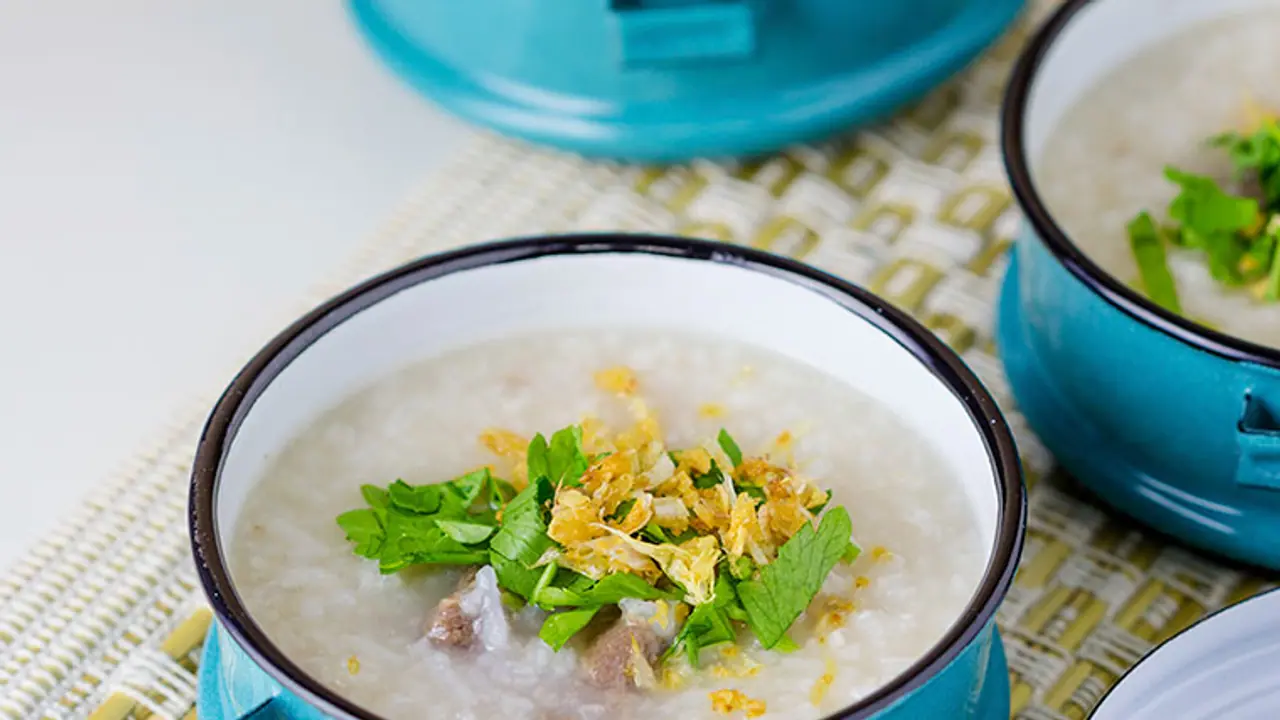Conjee or Kanji is a dish that is consumed in Asia and India It's a popular dish in the southern Indian states Besides cooking and eating, it serves another purpose
When you think of conjee or kanji, the images that come forth to mind are not particularly Instagram-worthy. In fact, it’s associated with being lacklustre and insipid if anything.

However, we’ve all heard that saying about judging books by their covers. Similarly, kanji, despite its lacklustre feature is home to surprising health benefits.
Unlike its Indian counterparts, the conjee in Asian countries like China and Indonesia among others comes in sweet and savoury options. The conjee is a staple item that is mostly had for breakfast.
This popular dish is often made in the southern states of India, and goes by many a moniker like kanji in Tamil Nadu and Kerala; in Karnataka and Andhra, it is referred to as ghanji.
Some of its health benefits include:
1. Medicinal purposes:
Kanji is often consumed when one is feeling under the weather. In Kerala, the Malayalam month of Karkidakom, is filled with rituals and rain. This is the peak monsoon season, and is considered as the best time to rejuvenate. Karkidaka Kanji is a traditional medicinal rice soup that boosts one’s immunity. It is prepared with 20 odd herbs, nine pulses and cereals. It helps treat rheumatic disorders that occur mainly during the monsoon season besides acting as a detoxifying agent, and thus strengthening one’s immune system.
2. Sick infants:
Kanji is a recommended home remedy for infants suffering from colic.
3. Weight loss:
Kanji is a low-cal dish that keeps you feeling satiated for a longer period of time unlike regular rice. This is also because of the water to rice ratio is greater than the average rice cooking procedure. Besides this, it tends to be warmer for a longer period of time. Of course, it goes without saying, do not add any additional toppings to your kanji. The more simple and straightforward it is, the easier it is to lose weight. Added bonus: you can replace rice with healthier options like millets or even red or brown rice.
4. Targets certain illnesses:
Different types of kanji can be made using several kinds of ingredients. However, specific ingredients help in healing certain ailments such as: leek, ginger and mustard. These are used when one has an upset tummy, digestion problems, and vomiting respectively among others. Depending on the illness, kanjis are very beneficial and can help alleviate the discomfort and pain.
5. As a starching agent:
Looking for a crisp finish to your attire, then look no further than your humble kanji water. Dip your said attire into the leftover kanji water (after removing the rice) for a while, and hang it out to dry. It's simple, fuss-free and devoid of any harmful chemicals, what's not to love?
Recipe: How to make Karkidaka Kanji
Ingredients :
1 cup | Navara or Njavara rice |
½ tablespoon | Common cress (Aashali) |
½ tablespoon | Fenugreek (Uluva) |
¼ cup | Pathimukham |
2 nos | Kurunthotti (root) |
5 nos | Shallots (chopped) |
5 nos | Garlic clove |
1 teaspoon | Ginger powder |
1 teaspoon | Jeera |
1 teaspoon | Crushed black pepper |
½ teaspoon | Tumeric |
1 teaspoon | Carom seed (Ajwain) |
½ cup | Blended coconut |
To taste | Salt |
1 litre | Water |
2 tablespoons | Ghee |
Method:
Boil rice and fenugreek seed in one-litre water. Once the rice is cooked, add all other ingredients except coconut and shallots and let it simmer on a low flame for about two minutes. Add coconut and remove from the fire as soon as it begins to boil. Fry the shallots in ghee till golden brown and crispy and garnish.
Optional: You can serve it hot with pickle, pappadam or coconut chutney.
